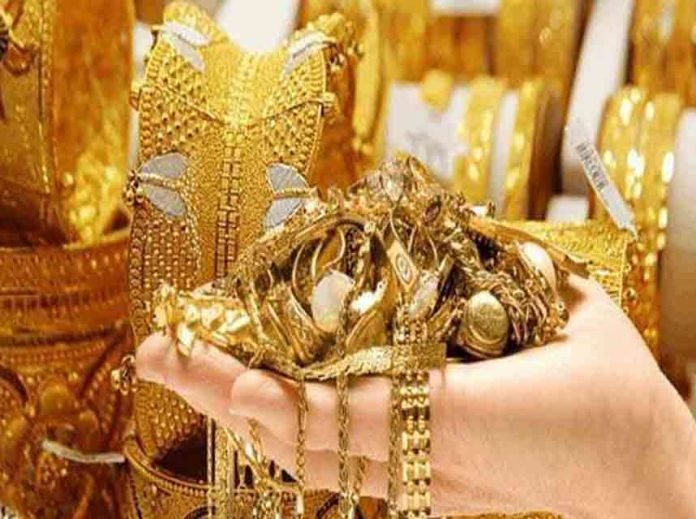The import of gold and silver from the United Arab Emirates (UAE) to India has seen an unprecedented rise of 210 percent in the fiscal year 2023-24, soaring to a staggering $10.7 billion from $3.5 billion in the previous year. This remarkable surge is attributed primarily to the duty concessions granted by India to the UAE under the Comprehensive Economic Partnership Agreement (CEPA).
Impact of CEPA on Gold and Silver Imports
The Comprehensive Economic Partnership Agreement (CEPA) between India and the UAE, implemented to enhance bilateral trade relations, has played a pivotal role in this surge. Under the terms of CEPA, India has extended significant duty concessions to the UAE, thereby reducing the cost of importing precious metals. Specifically, India provides a seven percent customs duty concession on silver imports and a one percent concession on 160 metric tonnes of gold. These concessions have made it more economical for traders to import gold and silver, leading to a substantial increase in the volume of imports.
Customs Duty Concessions and Their Implications
The strategic reduction in customs duties has had a profound impact on the import landscape. For silver, the seven percent duty concession has made it significantly cheaper to import from the UAE compared to other countries. Similarly, the one percent duty concession on a specified quantity of gold has facilitated larger imports within the concession limit. However, these concessions have also raised concerns about the long-term sustainability of such a trade policy.
Economic and Trade Analysis by GTRI
According to a report by the Global Trade Research Initiative (GTRI), there is an urgent need to reassess the concessional customs duty rates under CEPA. The current duty structure, while beneficial in terms of immediate trade volume, poses potential risks to the domestic market. Ajay Srivastava, the founder of GTRI, emphasized the need for a balanced approach to customs duties. He suggested that India’s high import duty of 15 percent on gold, silver, and jewellery should be reduced to five percent. Such a reduction could help in mitigating the dependency on concessional imports and support the domestic precious metals industry.
Strategic Recommendations for Policy Adjustment
To ensure a sustainable trade environment, it is crucial to revisit the customs duty concessions. The GTRI report highlights several key recommendations:
- Adjusting Concessional Duty Rates: Revising the concessional duty rates to strike a balance between encouraging imports and protecting domestic interests.
- Implementing Tiered Duty Structures: Introducing a tiered duty structure that adjusts the concessions based on the volume of imports to prevent market saturation.
- Strengthening Domestic Production: Investing in and promoting the domestic precious metals industry to reduce dependency on imports.
- Enhanced Regulatory Framework: Strengthening the regulatory framework to monitor and control the flow of imports, ensuring compliance with international trade norms.
Economic Implications of Increased Imports
The substantial increase in gold and silver imports has several economic implications. On the positive side, it has:
- Boosted Bilateral Trade: Strengthened economic ties between India and the UAE, contributing to the overall trade volume.
- Lowered Import Costs: Reduced the cost of precious metals for traders and consumers in India, fostering greater market activity.
- Enhanced Market Supply: Improved the availability of gold and silver in the domestic market, meeting the high demand during festive seasons and for industrial use.
However, these benefits come with challenges:
- Market Saturation: Excessive imports could lead to market saturation, impacting the prices and profitability of domestic producers.
- Trade Imbalance: The heavy reliance on imports could lead to a trade imbalance, affecting the overall economic stability.
- Duty Revenue Loss: The reduction in customs duties results in lower revenue for the government, which could impact public finances.
Comparative Analysis with Other Trade Partners
The surge in imports from the UAE highlights the need to compare India’s trade policies with those of other major trade partners. Countries like China and the US have adopted different strategies to manage precious metals imports, focusing on:
- Strict Duty Regulations: Maintaining higher import duties to protect domestic industries.
- Promoting Domestic Production: Encouraging investment in domestic mining and refining capacities.
- Bilateral Trade Agreements: Negotiating trade agreements that balance import benefits with domestic economic interests.
The 210 percent increase in gold and silver imports from the UAE due to the Free Trade Agreement (FTA) underscores the significant impact of trade policies on bilateral commerce. While the Comprehensive Economic Partnership Agreement (CEPA) has facilitated this growth through substantial duty concessions, it also presents challenges that need careful consideration. To ensure a balanced and sustainable trade environment, policymakers must revisit and adjust the concessional duty rates, promote domestic production, and implement a robust regulatory framework. By doing so, India can harness the benefits of increased imports while safeguarding its economic interests and supporting the growth of the domestic precious metals industry.















